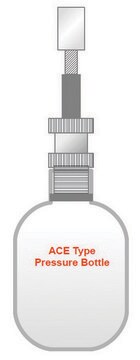11498045910
Roche
Actin RNA Probe, DIG-labeled
solution, pkg of 2 μg
About This Item
Productos recomendados
form
solution
Quality Level
packaging
pkg of 2 μg
manufacturer/tradename
Roche
greener alternative product characteristics
Designing Safer Chemicals
Learn more about the Principles of Green Chemistry.
sustainability
Greener Alternative Product
greener alternative category
storage temp.
−20°C
Categorías relacionadas
General description
Application
- in In situ hybridization (for example, as a control in mRNA detection)
- for quality control in the construction of cDNA libraries
- in northern blot analysis to evaluate RNA from various human cell lines and tissue samples
Components
Sequence
Preparation Note
- Remove the desired number of isotyping strips from the canister. Remove the caps from an equal number of development tubes.
The tubes may be labeled with a pencil or felt-tipped lab marker for easy identification. - Dilute a sample containing the mouse monoclonal antibody in 1% BSA/ phosphate-buffered saline (PBS), pH 7.2 to 7.6.
Culture supernatant samples should be diluted 1:10 to 1:100. Ascites samples should be diluted 1:20,000. These are recommended dilutions and may vary depending on the concentration of antibody in your sample. In our experience, a monoclonal antibody
concentration of 0.1 to 1 g/ml of diluted sample gives the best results. 150 ml of this diluted sample will be added to the development tube.
Storage conditions (working solution): During assay, the preparation should be maintained at 0 °C.
Other Notes
Storage Class
12 - Non Combustible Liquids
wgk_germany
nwg
flash_point_f
No data available
flash_point_c
No data available
Certificados de análisis (COA)
Busque Certificados de análisis (COA) introduciendo el número de lote del producto. Los números de lote se encuentran en la etiqueta del producto después de las palabras «Lot» o «Batch»
¿Ya tiene este producto?
Encuentre la documentación para los productos que ha comprado recientemente en la Biblioteca de documentos.
Los clientes también vieron
Artículos
Digoxigenin (DIG) labeling methods and kits for DNA and RNA DIG probes, random primed DNA labeling, nick translation labeling, 5’ and 3’ oligonucleotide end-labeling.
Nuestro equipo de científicos tiene experiencia en todas las áreas de investigación: Ciencias de la vida, Ciencia de los materiales, Síntesis química, Cromatografía, Analítica y muchas otras.
Póngase en contacto con el Servicio técnico




